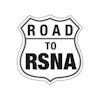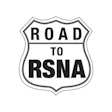Thursday, November 30 | 8:10 a.m.-8:20 a.m. | R1-SSNMMI07-2 | Room S403A
In this session on pediatrics and general oncology, a study will be presented that explored the value of F-18 FDG-PET/MRI radiomics features in predicting rhabdomyosarcoma in children.
In childhood rhabdomyosarcoma, malignant cancer cells form in muscle tissue, connective tissue (such as tendon or cartilage), or bone. In the study, the researchers gathered clinical data and PET/MR imaging data of 125 children with pathologically confirmed disease and divided them into two groups: embryonal rhabdomyosarcoma (ERMS) (n = 75) and acinar rhabdomyosarcoma (ARMS) (n = 50). Pathological and clinical diagnosis results serve as the gold standard for diagnosis.
The group used software to extract the most relevant "imageomics" features for tumor classification and randomly divided the two groups of images into a training set (70%) and a test set (30%).
According to the findings, established PET/MRI radiomics features showed good prediction efficiency for the recognition of ERMS and ARMS classification, with significant differences. It produced an AUC of 0.92 in the training group and 0.86 in the validation group.
“The prediction model of PET/MR radiomics features can be used as a promising and practical auxiliary method to predict the pathological classification of rhabdomyosarcoma in children. It can also provide objective basis for accurate clinical diagnosis and individualized treatment, and has important guiding significance for clinical treatment,” noted presenter Yuting Gao, MD, of Ruijin Hospital in Shanghai, China, and colleagues.
Check out this session to find out the details.

